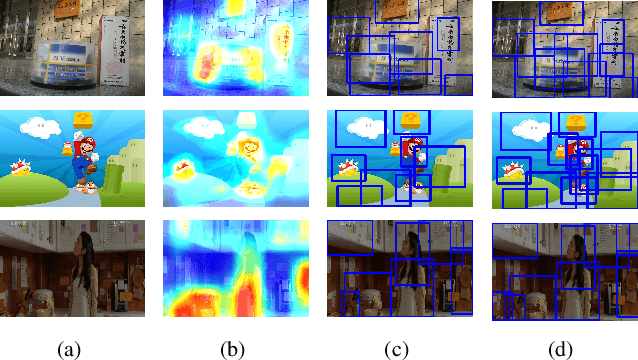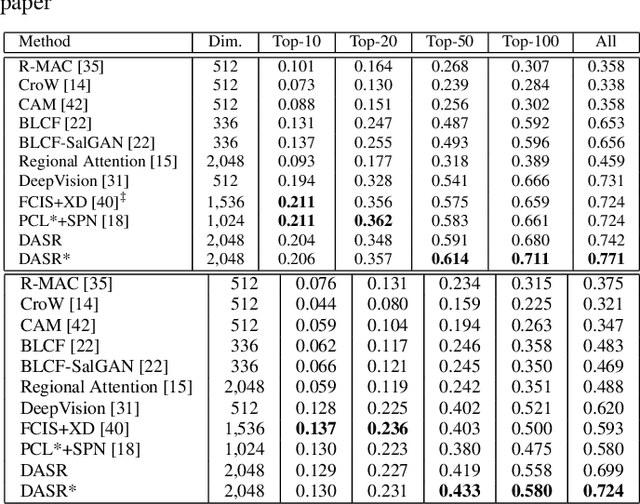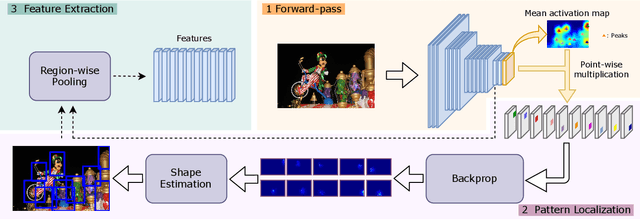Deeply Activated Salient Region for Instance Search
Paper and Code
Feb 22, 2020



Due to the lack of suitable feature representation, effective solution to the instance search is still slow to occur. In this paper, a simple but effective instance-level feature representation is presented. Both the instance localization and distinctive feature representation are carefully considered in our design. On the first hand, the salient instance regions from images are detected by a layer-wise back-propagation process. The back-propagation starts from the last convolution layer of a pre-trained CNN that is originally used for classification. The back-propagation proceeds layer-by-layer until it reaches the input layer. This allows the salient regions in the input image from both known and unknown categories to be activated. Each activated salient region covers the full or more usually a major range of an instance. Secondly, distinctive feature representation is produced by average-pooling on the feature map of certain layer with the detected instance region. Experiment shows that such kind of feature representation demonstrates considerably better performance over fully-supervised approaches. In addition, we show that it is also suitable for content-based image search tasks.
 Add to Chrome
Add to Chrome Add to Firefox
Add to Firefox Add to Edge
Add to Edge